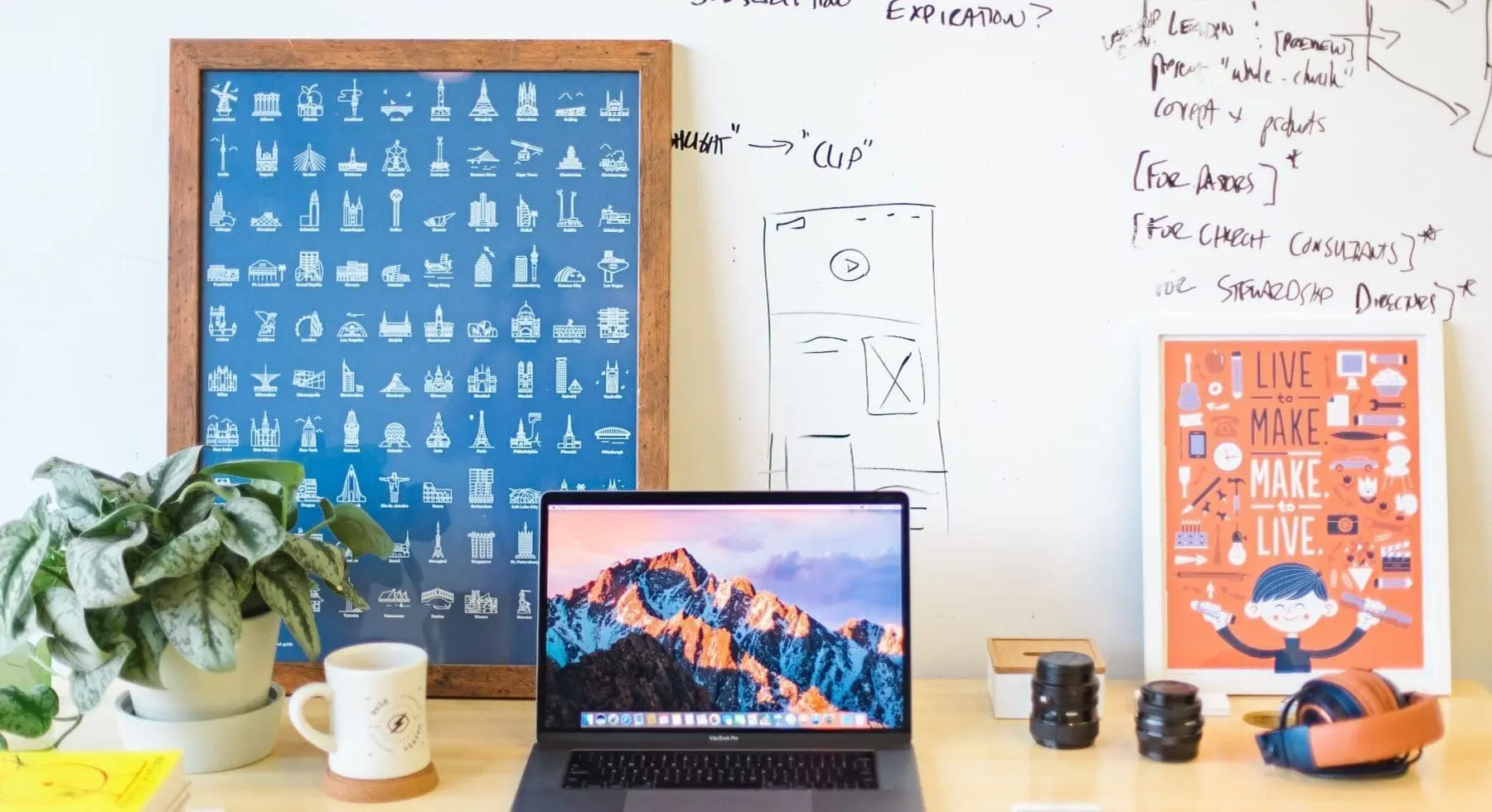Design
8 Amazing Sources of Web Design Inspiration
Jeffrey Zeldman first heard that web design was dead in 1996, but the so-called “King of Web Standards” shrugged off that grim assessment. The visual appeal of the web resides in the endless ways designers use the medium. According to Zeldman, the aesthetics of the web follow a simple rule:

“90 percent of design is typography. And the other 90 percent is whitespace.”
Typography goes far beyond. The interplay between your content and whitespace (or negative space) can make or break how users experience your site. Even if you build a better mousetrap, the world won’t beat a path to your door if your website doesn’t convert. If your CTA is buried beneath useless verbiage presented in hard-to-read typeface, users won’t bother clicking.
But typography is flourishing like never before, and now is a great time to take a deep dive into this evolving nexus where art and commerce merge into one breathtaking testament to the human capacity to innovate. If genius consists of 99% perspiration, according to Thomas Edison’s famous dictum, then let’s see if we can’t get at least 1% inspiration from some of today’s leading creatives.
1. Typewolf
Back in 2013, Jeremiah Shoaf became frustrated that there wasn’t a dedicated on-line resource for web designers who needed to choose a font. Particularly, he wanted to see type samples as they actually looked on the web. So he started Typewolf to become the go-to depository of all things type related from a designer’s point of view.
Typewolf features a Site of the Day, and these range widely in style and purpose, but the focus remains on the typography. It’s easy to get lost in the incredible array of talent on display, but for a quick reference, there’s a “Most Popular Font” footer that gives you the top fifteen fonts. For a more detailed look, the Font Recommendations & Lists is an exhaustive compendium from dozens of different foundries, regardless of what company owns the rights.
2. Font Review Journal
To many users, typeface can be like an obedient child: seen but not heard. But true aficionados not only see the typeface, they also want to “hear” it, to know much more about how this unique style came to be. Bethany Heck began the Font Review Journal to bridge the gap between a font and its backstory, the hundreds of hours of painstaking work that can span years. A web designer picks something that looks right, and Heck’s purpose was to enrich that selection so that the artistry can be celebrated.
Make no mistake: the Font Review Journal offers full-bodied reviews of fonts, not one-paragraph summaries but very well-informed discussions that are equal parts history lesson and art theory class. And “art” is the key term here, because while it’s easy to pick a font with a drop-down menu, users should realize the efforts designers put in to capture information, convey beauty, and leave a lasting impression, through how letters are formed.
3. Fonts in Use
Imagine being able to search through a vast database of fonts categorized in many different ways. That’s the general idea behind Fonts In Use, which is “a public archive of typography indexed by typeface, format, industry, and period.” A simple statement of fact, but one that says a mouthful.
The indexing here is what is most useful. Instead of randomly scrolling through images, you can use a term like “newspaper” and get results based on typeface, tags, formats, and designers. If you have a client with a unique set of challenges, Fonts in Use can serve as an indispensable resource to help stimulate your creative juices. Within the search results, you can turn to “Staff Picks” for an even more curated experience.
4. Dribbble
Dribbble markets itself as a “destination to find and showcase creative work,” and it does so in many fascinating ways. Certainly, there’s the job board aspect, where designers can look for work and companies can post jobs. But the Explore tab is where the talent is showcased, and combing through these “shots” can help clarify your own thinking of where your own personal brand is trending.
But if you feel stuck creatively, Dribble offers a Weekly Warmup that challenges you to get past any blockage and just get something done. Likewise, the Playoffs allows you to collaborate with other designers on a shared shot, to provide your own angle while seeing what others have done. The low-stakes, playful element to these kinds of tasks have all kinds of cognitive benefits, especially when you’re feeling uninspired.
5. Pinterest
Pinterest is where you go when you’re ready for some no-holds-barred wrestling with the masses. The sheer number of pins can be overwhelming, depending on what you’re looking for. Searching for “fonts” can take you from the highest high to the lowest low.
But inspiration isn’t rational. There isn’t an algorithm for it (yet), and whether artificial intelligence can actually create art remains an open question. AI does well with rules, but creativity doesn’t have any. So Pinterest can be a bumpy ride, but bumpy rides can dislodge things. There’s no telling when your muse will light you on fire. It could be a pin about fonts lacking in merit, that makes you groan…and then later you get an idea.
6. Awwwards
Our criminal justice system is based on a jury of your peers determining your guilt or innocence. Awwwards uses this same philosophy when it comes to evaluating web design, except the jury is composed of well-established design professionals ready to offer critique of your work.
Awwwards offers web designers a real make-or-break opportunity. Should your page get the best rating for a given day, it becomes a Site of the Day, which then enters into the Site of the Month competition. Those winners vy for Site of the Year. The entire process is transparent and rigorous, but here’s the twist. You can build up enough user points to become a judge yourself–but that requires lots of commenting on the work of others as you try to reach Pro status. But it’s helpful to undertake this effort if you want your own work to improve. By rigorously applying aesthetic standards on the submitted work, you will gain perspective on your own.
7. Really Good Emails
Emails: can’t live with them, can’t live without them. If you’re looking to grow your customer base, coming up with a great email cycle can seem like an impossible task. The average open rate hovers between 15 to 25%, but in some industries, that rate could be much lower. The metrics for a “great email cycle” are elusive and highly contextual.
Enter Really Good Emails, a curated collection of nearly 6,000 emails that show off both design and code. With email marketing being both incredibly nebulous and super important, this site can reveal what works. Here font especially matters, because as Malcolm Gladwell reminds us in Blink, first impressions come hard and fast, and people often don’t move away from the “anchor” of that first look. It’s hard enough getting someone to open an email…but if the font is off-putting, then it’s all for nothing. The visuals of the email matter as much or more than the content.
8. siteInspire
Approximately 4.2 billion websites exist today, a number that’s hard to digest, like philly cheesesteak. Getting yours noticed takes a tremendous amount of luck and effort. To showcase the best in web and interactive design, siteInspire sorts through around 200 daily submissions that push the boundaries without relying on gimmicks or ornamentation. Flash isn’t a dealbreaker, in case you were wondering.
For each of the featured websites, there’s a list of related sites that can amplify the look and feel that helped the design stand out. This search for excellence is what Aristotle considered to be the entire point of life. Some of the sites that get featured are flawed, but there are design elements that still merit attention. “Failing better” comes from the playwright Samuel Beckett, but it is the foundation of every truly unique creation.




